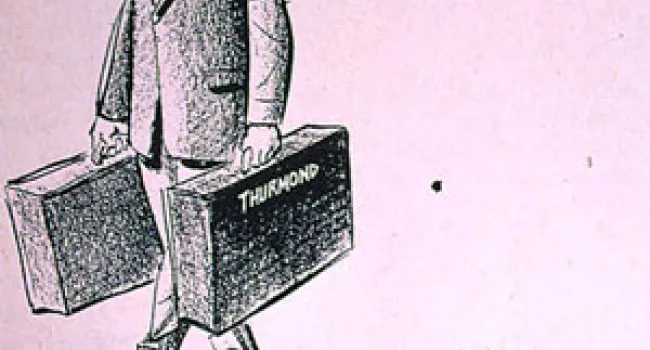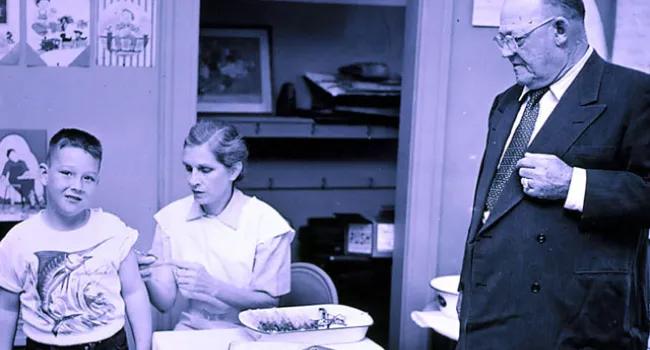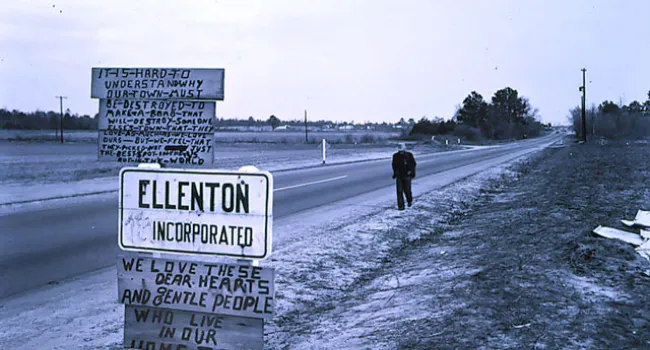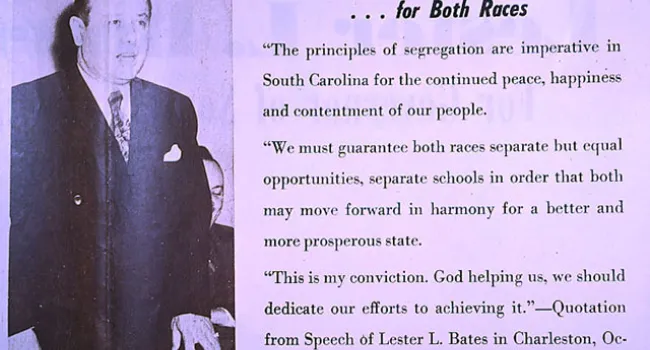
One of the methods of non-violent protest against segregation, taught by Martin Luther King and others in the Civil Rights Movement, was the practice of sit-ins at restaurants and coffee shops. African-Americans, often students, quietly sat down in businesses or sections reserved for white patrons, requesting service. Photograph by Vic Tutte, in Columbia in the 1960s.
Courtesy of "The State" newspaper.
Standards
- This indicator was developed to promote inquiry into how the lifestyles of those living in capitalist countries differed from those living in communist countries. This indicator was also designed to promote inquiry into how the rights of citizens differed in capitalist and communist countries.
- This indicator was designed to foster inquiry into the role of South Carolina in the Modern Civil Rights Movement, to include the influence of court cases such as Briggs v. Elliot and Flemming v. South Carolina Electric and Gas. This indicator was also developed to promote inquiry into the relationship between national leadership, protests, and events and South Carolina leadership, protests and events, such as the Friendship Nine and the Orangeburg Massacre.











